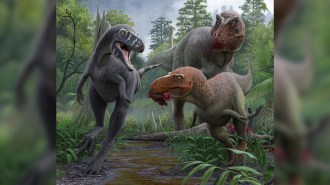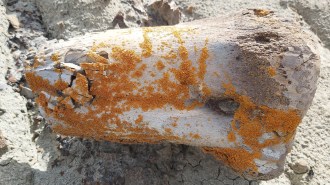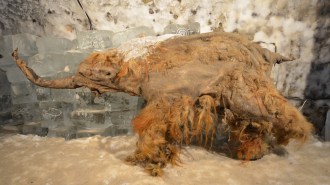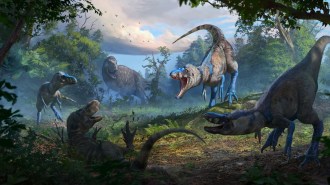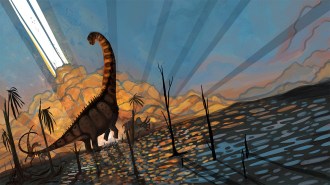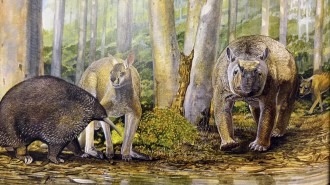Fossils’ ear design hints at aquatic lifestyle
One of Earth’s earliest-known four-limbed creatures–long thought to have been a land dweller at least part of the time–could hear best when it was underwater, according to new studies of fossilized skulls.
Remains of Ichthyostega, a stout-limbed tetrapod that lived about 360 million years ago, were first described by scientists in the 1930s. Despite decades of analyses of many fossils, several features of the creature’s skull and ear region have remained enigmatic. Some characteristics, including two large, bony chambers near the rear of the animal’s head, are found only in Ichthyostega, says Jennifer A. Clack, a paleontologist at the University Museum of Zoology in Cambridge, England.
She and her colleagues used several techniques, including computer-aided-tomography scans, to scrutinize some long-studied Ichthyostega fossils, as well as finds unearthed in 1998.
During their analyses, the scientists realized that previous investigators had misidentified a delicate, cup-like feature that projects into each of the chambers at the rear of the creature’s head. That bone turned out to be the stapes, which transmitted vibrations to the animal’s inner ear.
Clack and her team suggest that each stapes was embedded in a membrane that sealed the air-filled chamber. As a result, the air bubble housed in each cavity would pulsate in response to sound waves, causing the membrane to oscillate and enabling the animal to hear. That design would have detected sound best when Ichthyostega was immersed in water, an indication that the animal may have spent more time in the water than scientists previously suggested, the researchers report in the Sept. 4 Nature.
****************
If you have a comment on this article that you would like considered for publication in Science News, send it to editors@sciencenews.org. Please include your name and location.

